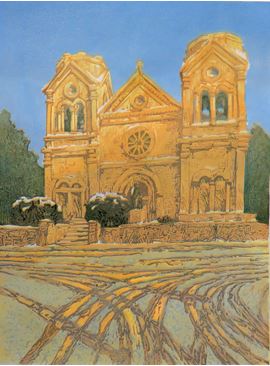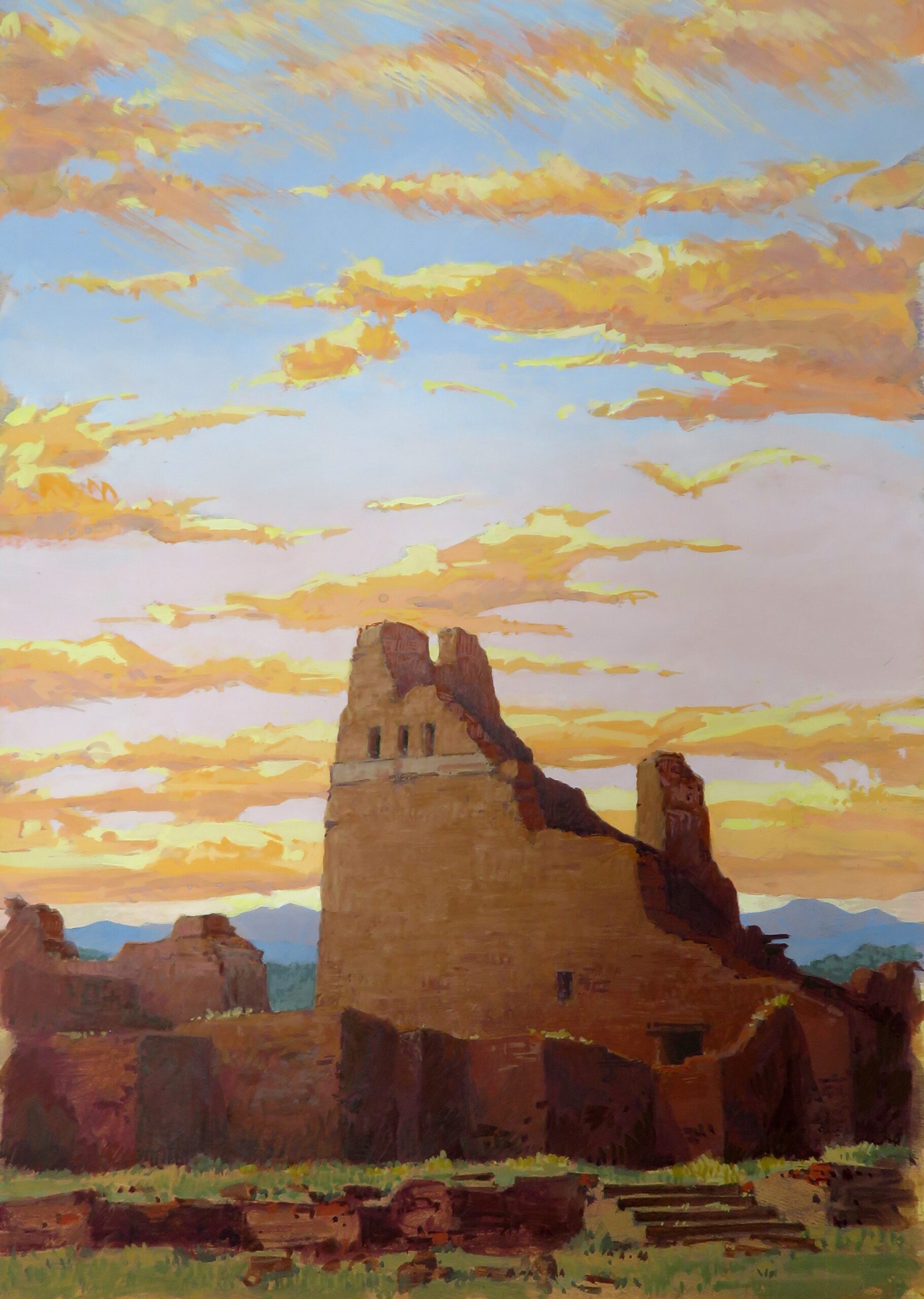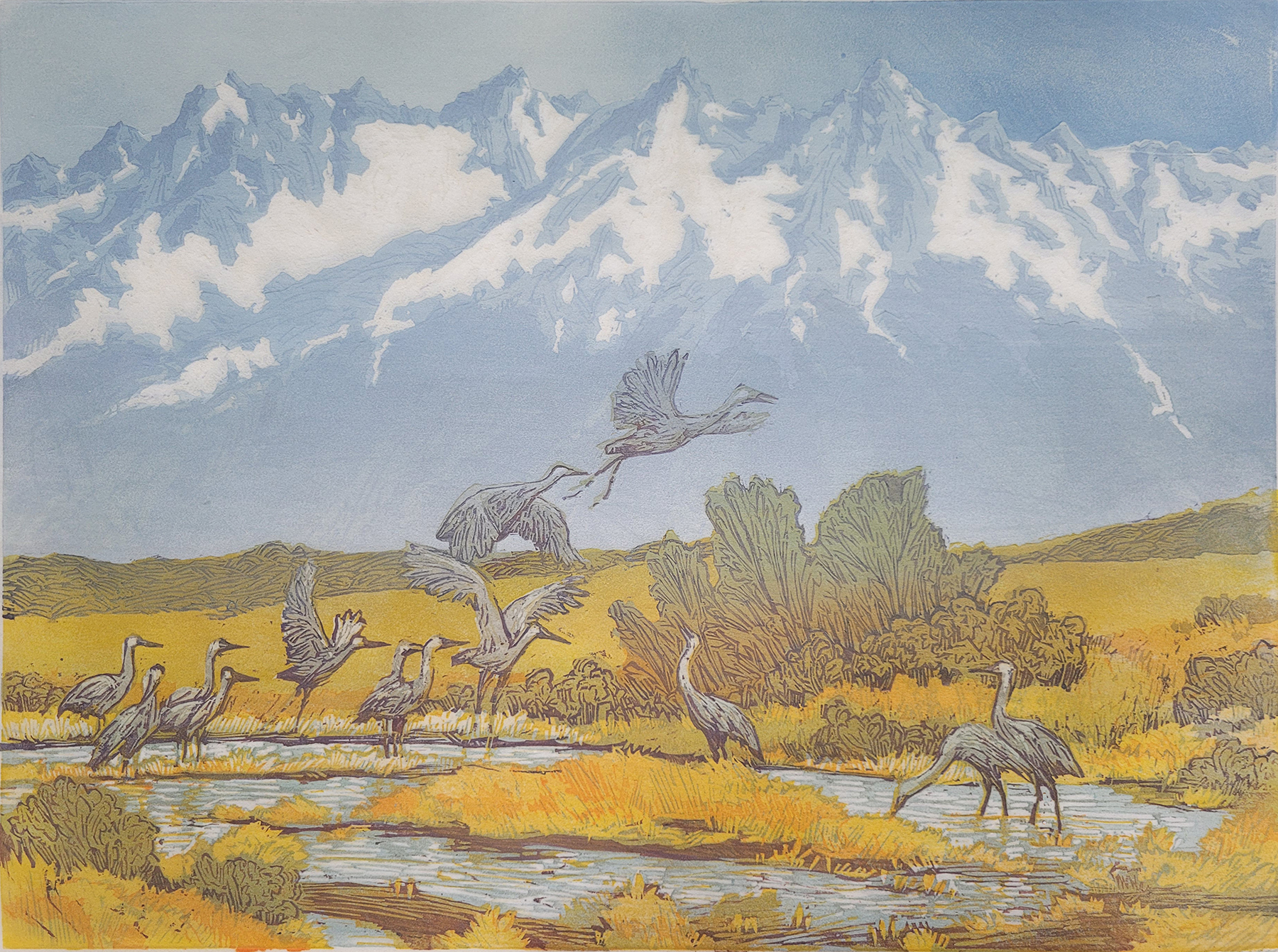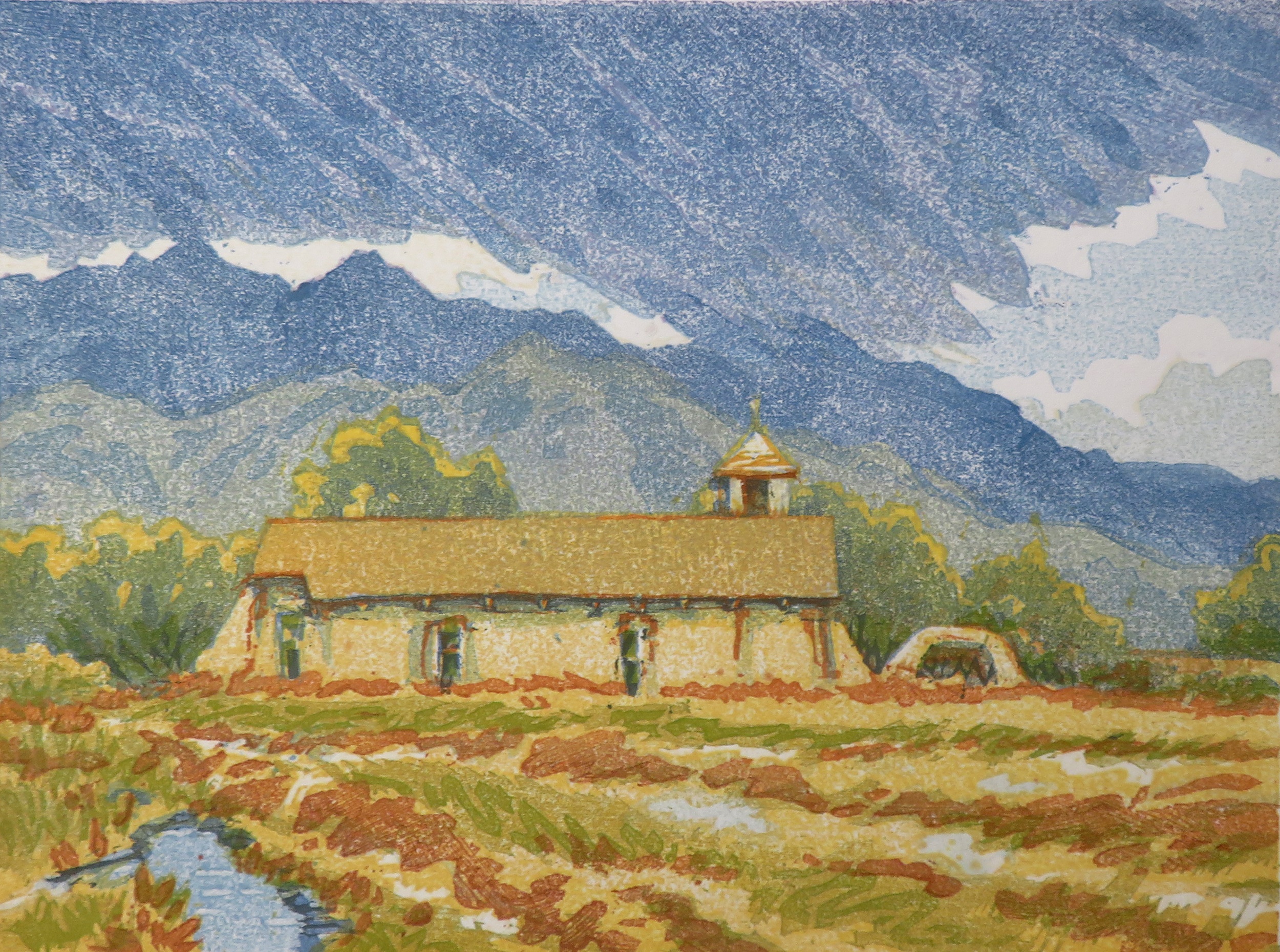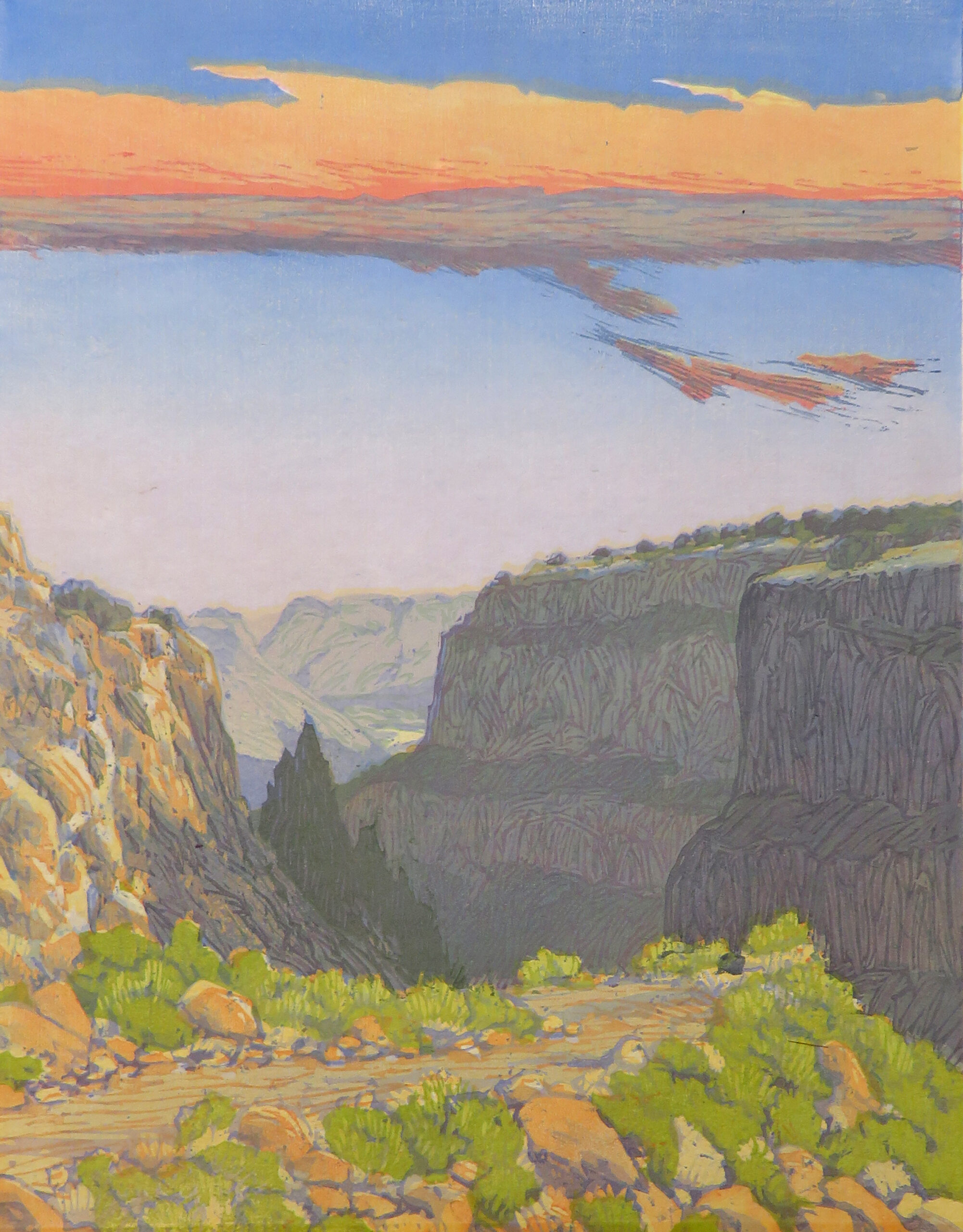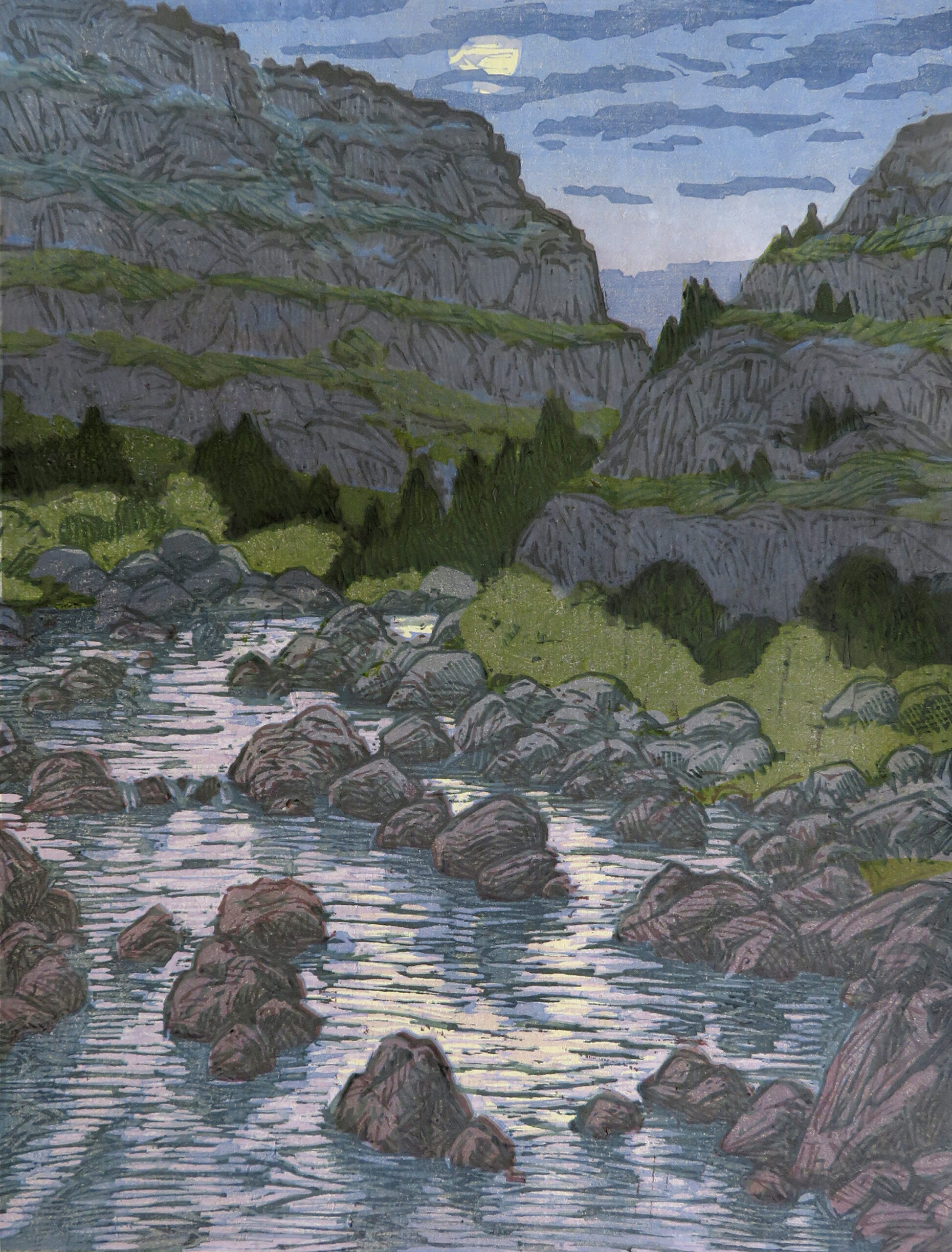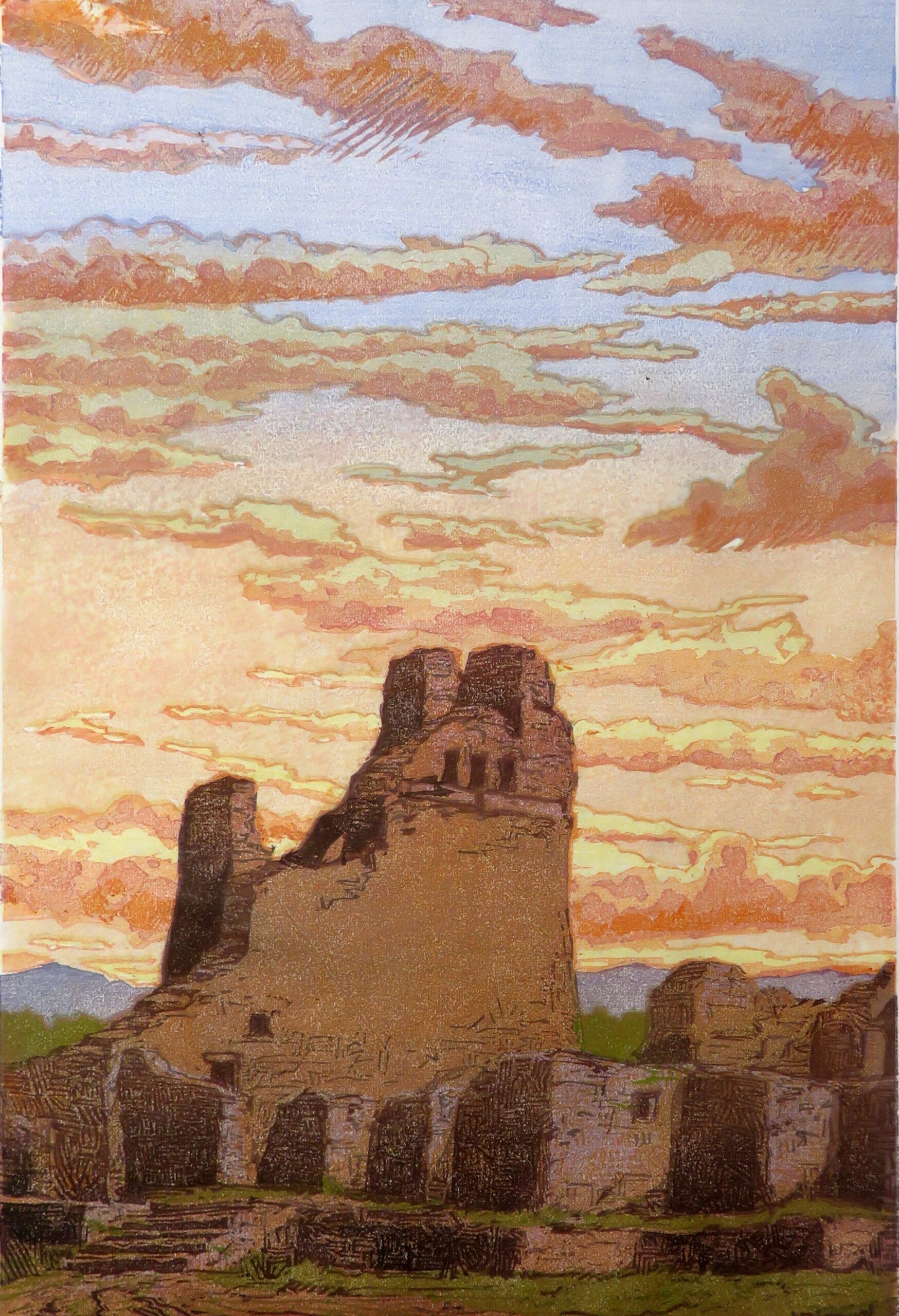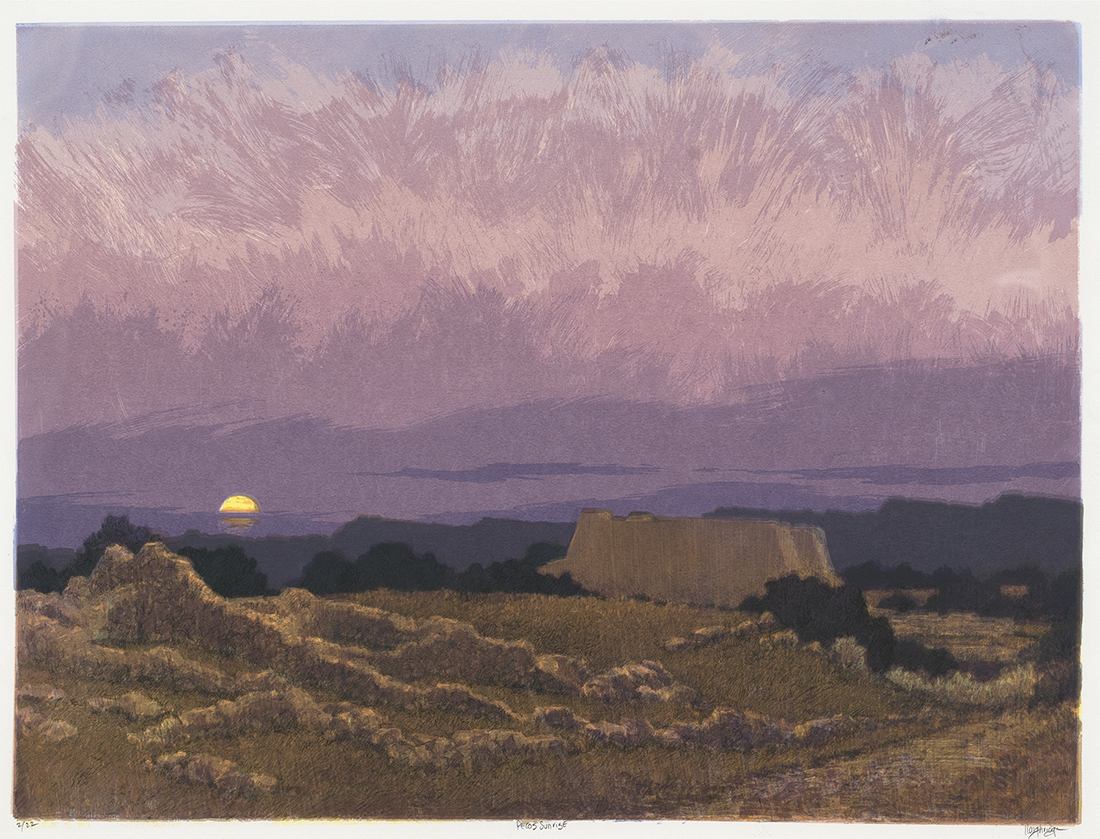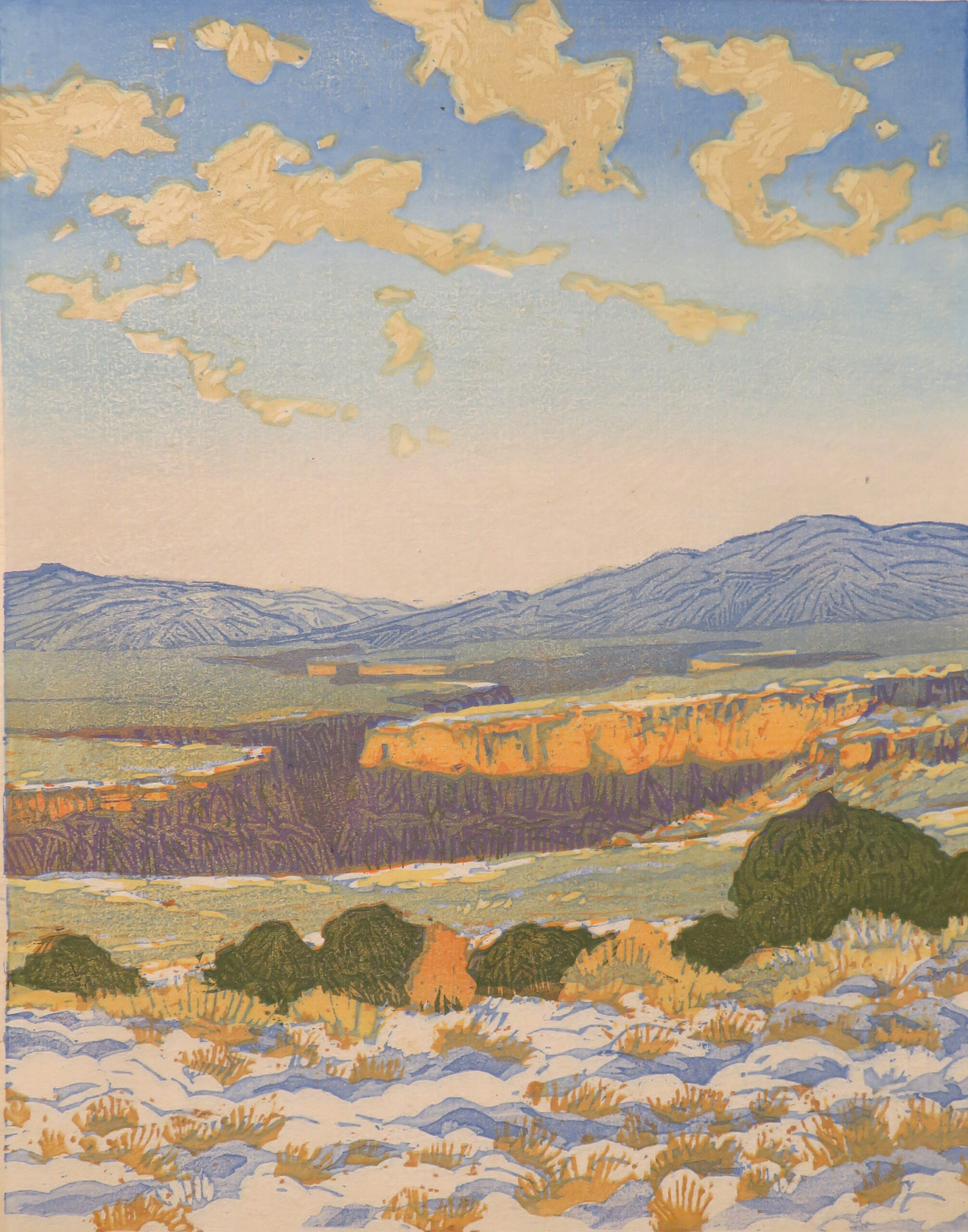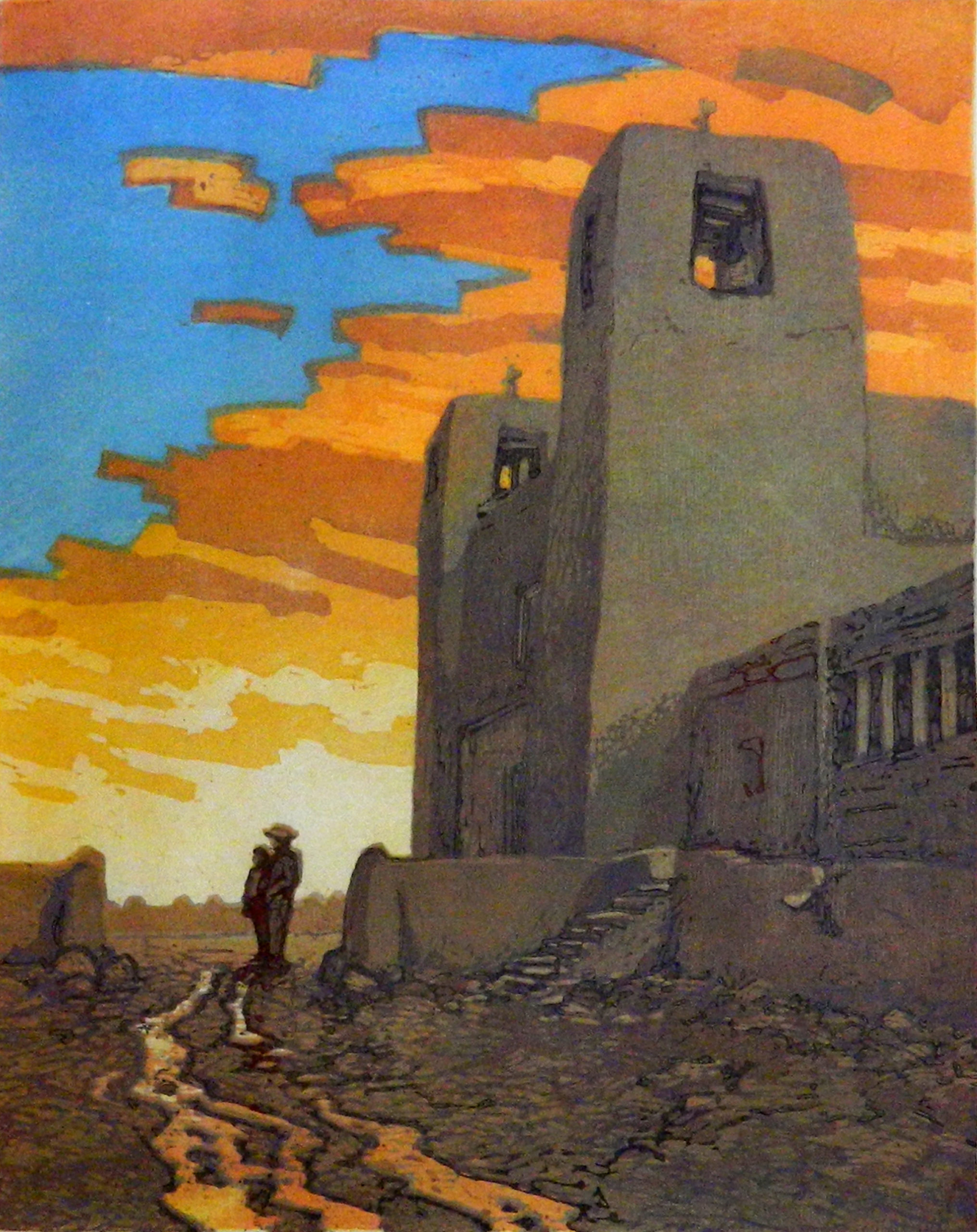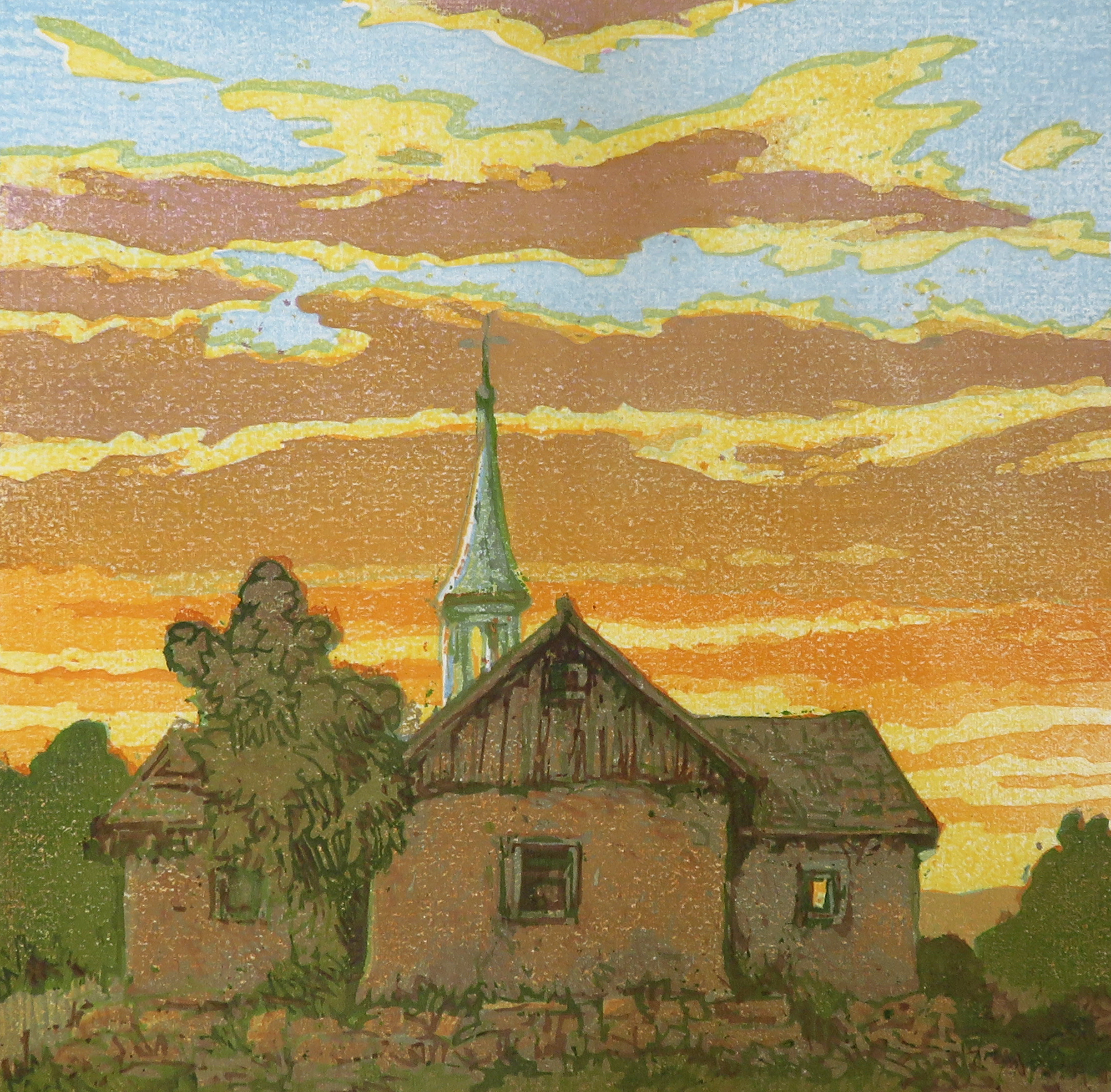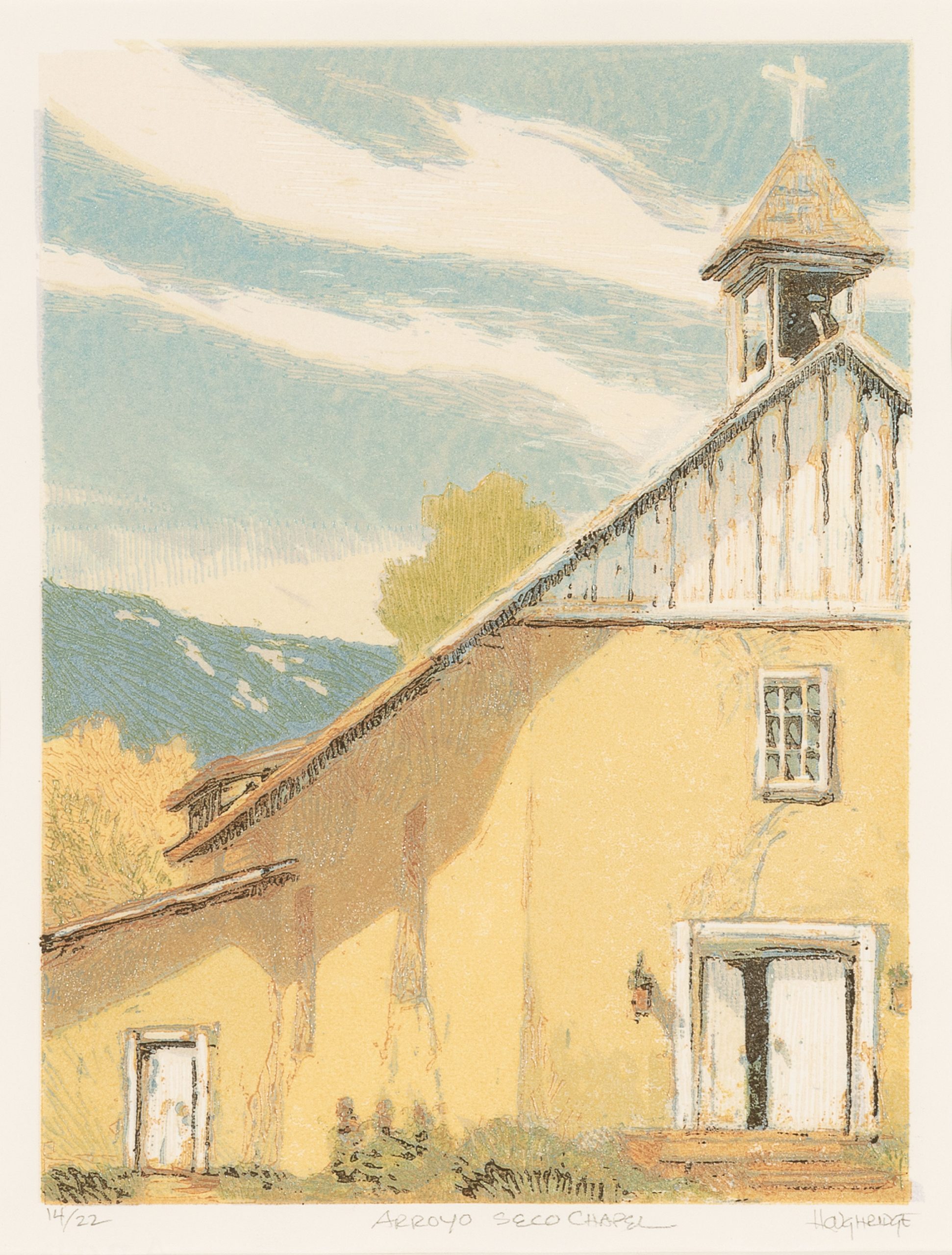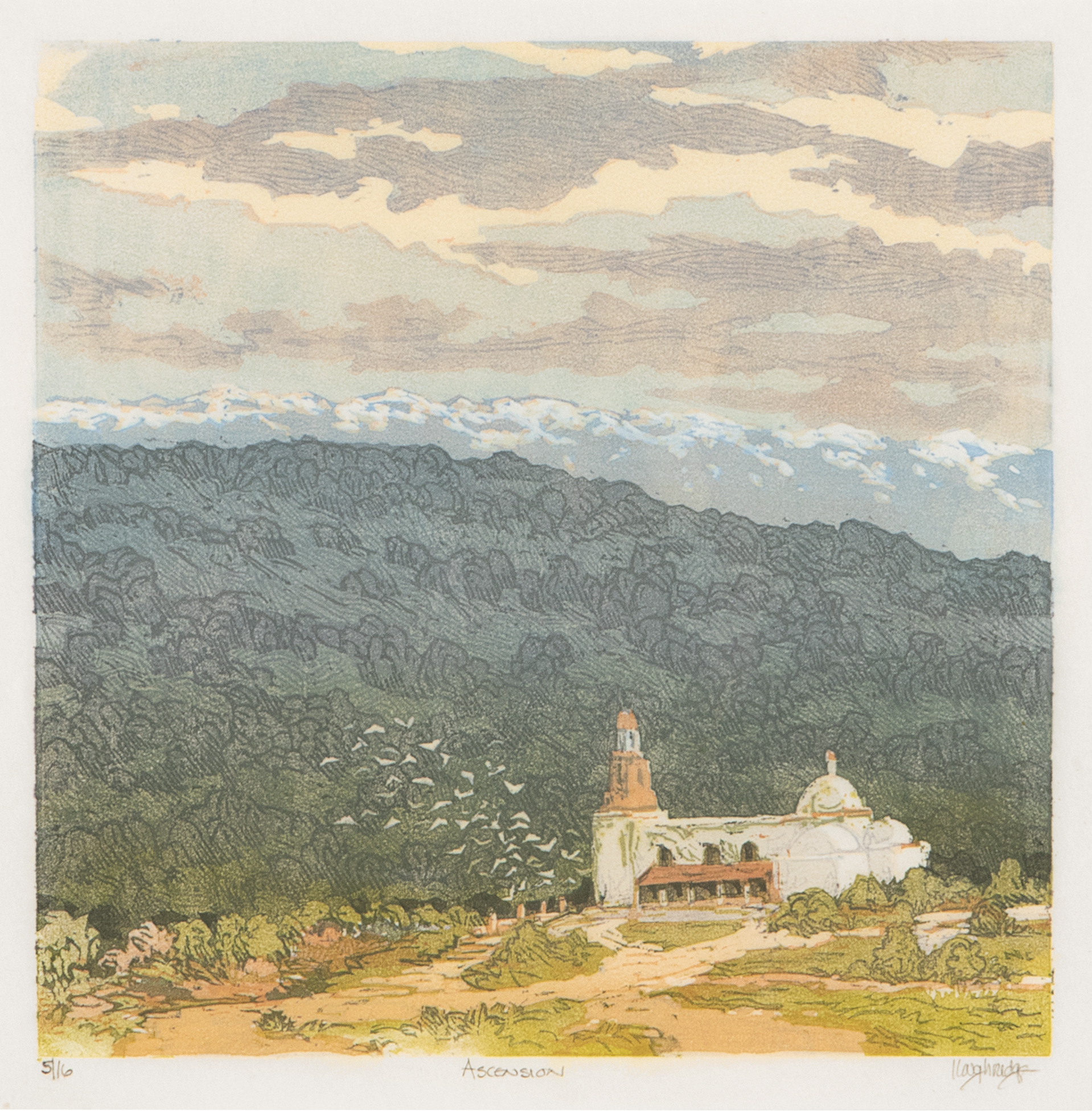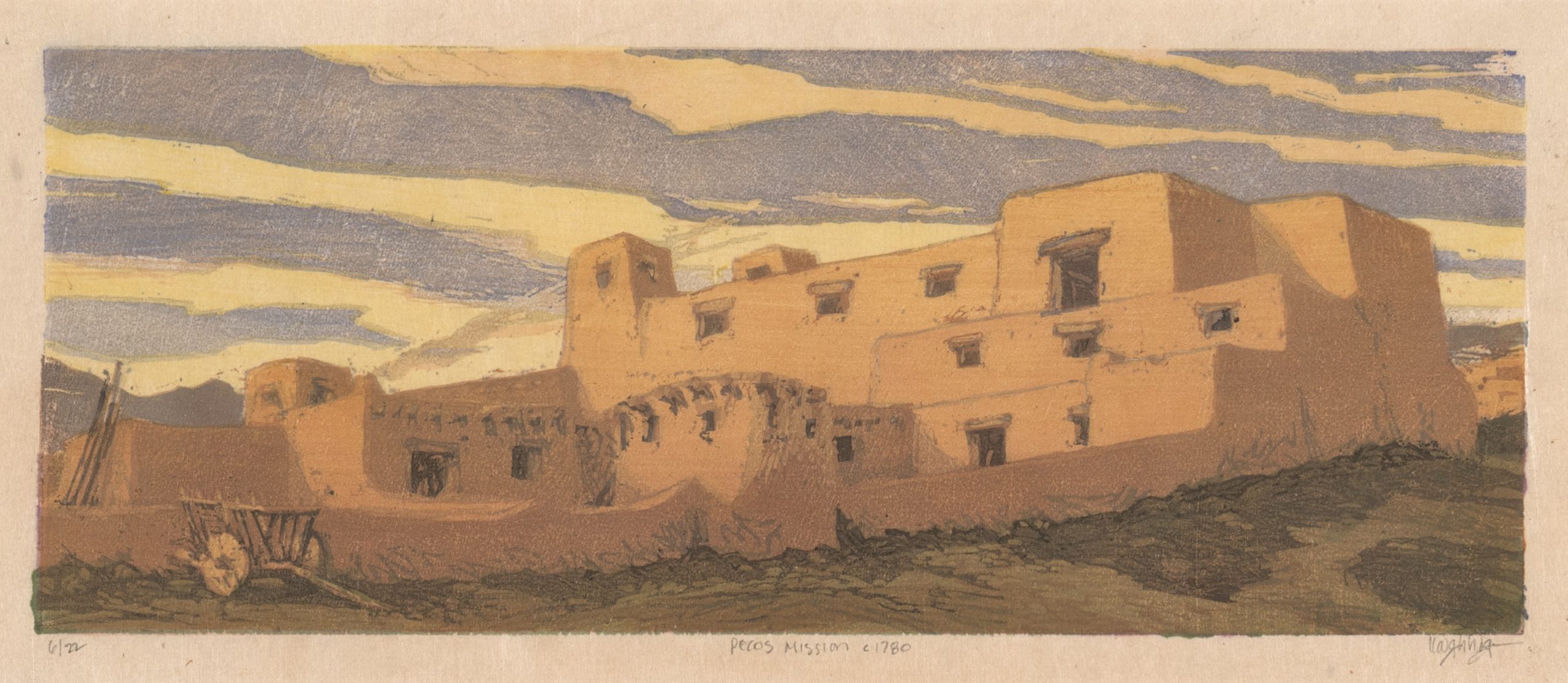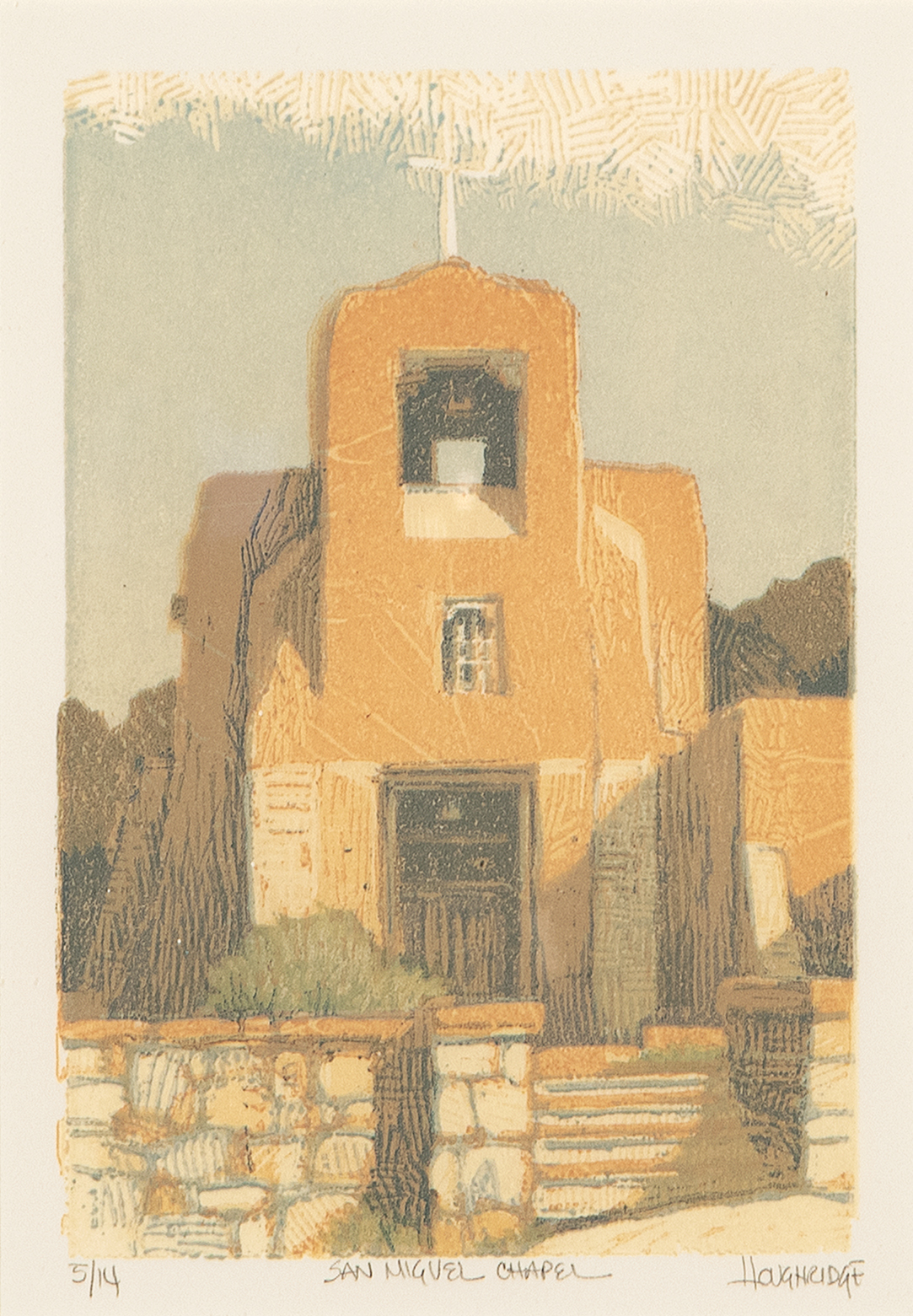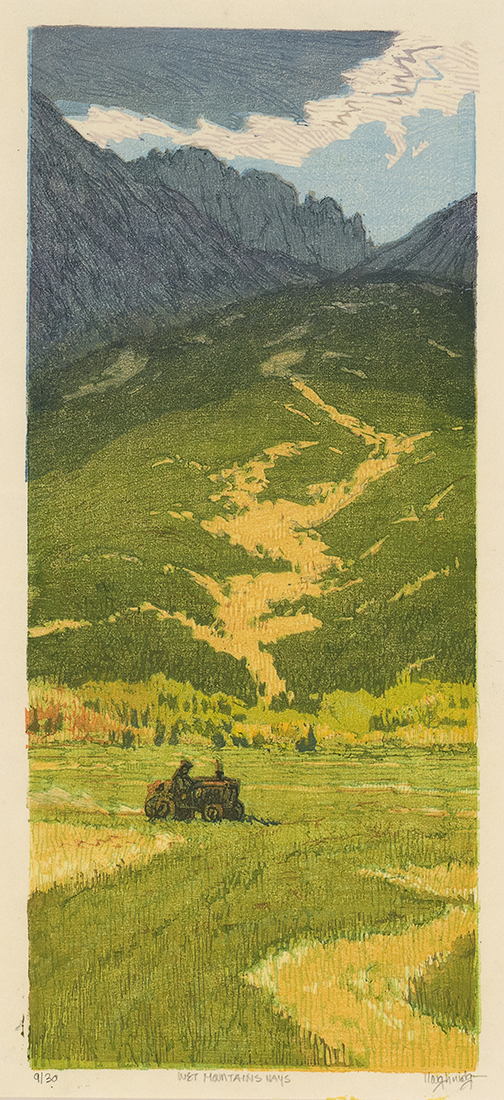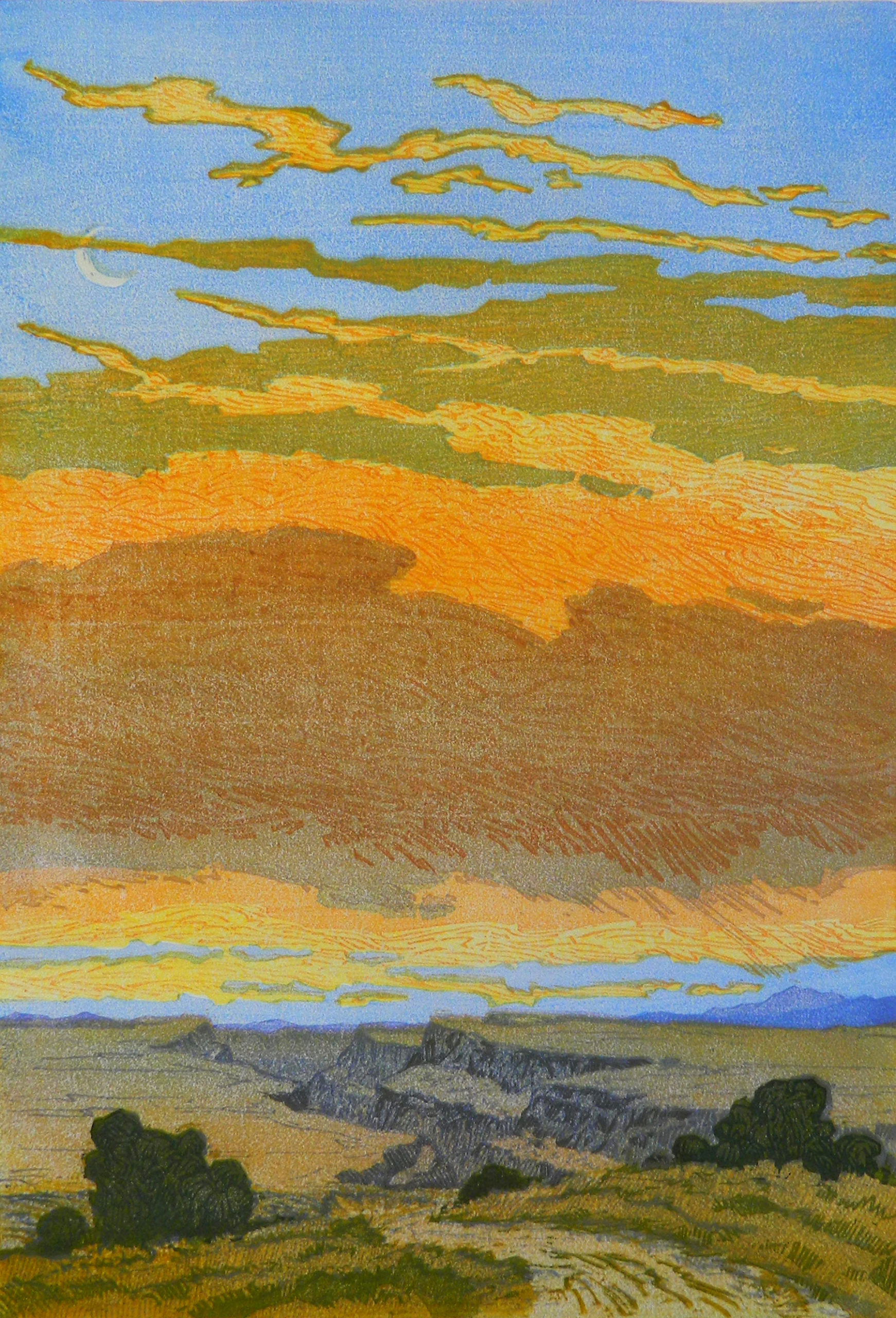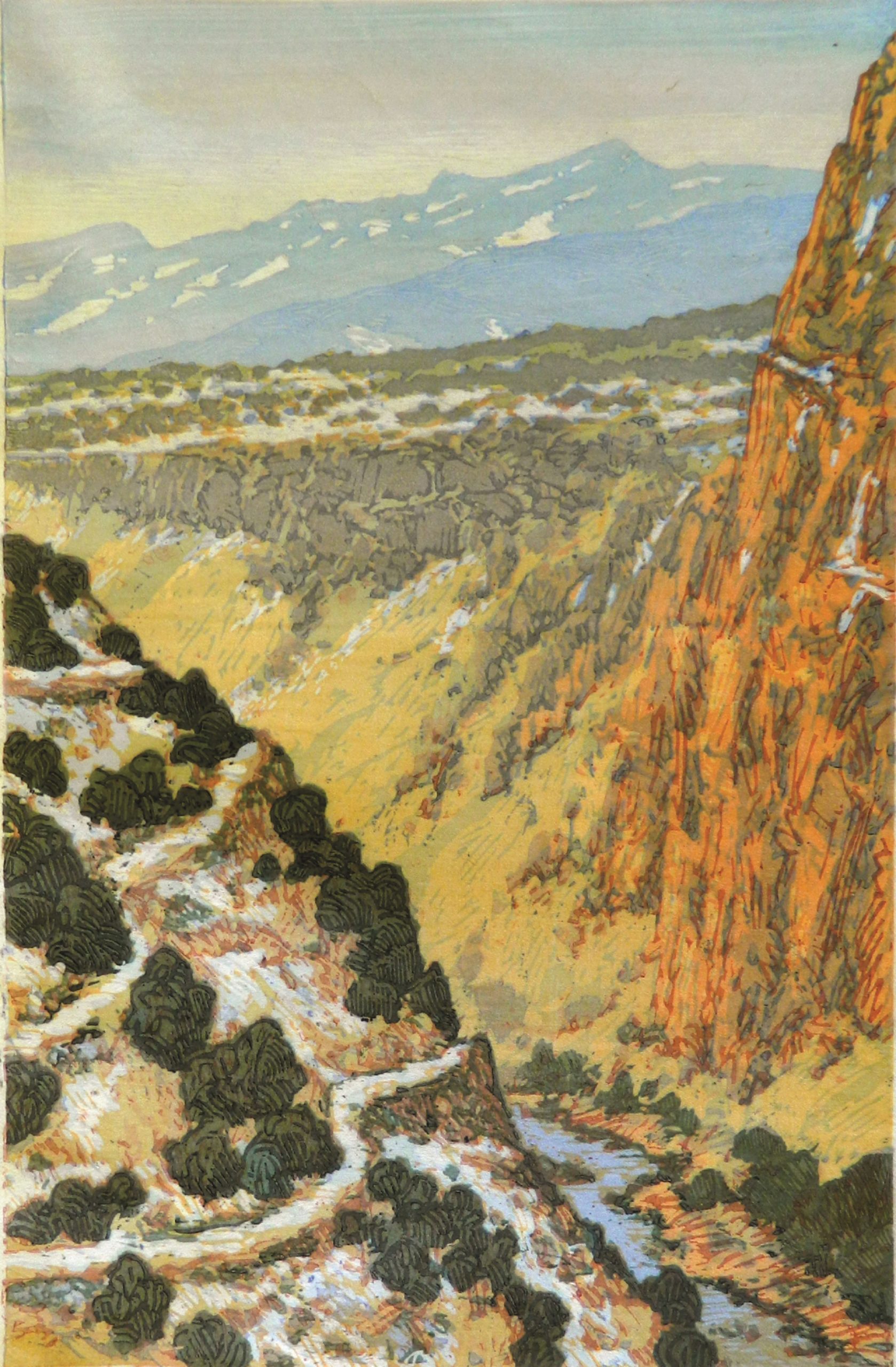Southwestern scenes dominate the work of Denver artist Leon Loughridge: the region is a part of his artistic heritage. Loughridge was raised on a ranch outside Santa Fe, and he traces his interest in art to his grandmother’s involvement in northern New Mexico art circles. Moreover, the visual aspects of the southwest –the scale and subtle colors of the landscapes, the organic lines and textures of the architecture –are perfectly suited to the medium for which Loughridge is best known: woodblock prints.
Loughridge begins each work with a plein air oil sketch to determine the simple forms and the relative lightness and darkness of an image. He then transfers the image to tracing paper, cutting a relief block –usually a composite board with a maple veneer –to the same size. The image is then transferred in reverse onto the block Loughridge then carves away the uninked areas of the block using a variety of tools –large areas can be removed with a router, for example, but the fine lines needed for details must be cut by hand. The process involves the preparation of more than one woodblock; Loughridge usually makes one block for warm colors (reds, oranges, yellows) and one for cool colors (greens, blues, purples). The oil-based inks, which Loughridge mixes himself, combining colors and dry pigments to achieve the desired effects, are applied with large rollers to ensure even application. A hand-operated printing press then uses pressure to transfer the inked image onto the paper. This process is repeated for the application of each color on the print, with each print going through anywhere from twelve to eighteen “color runs.”
I want to record in printed form the elated feelings I have from my original sketches and paintings. Sketching is a very direct and invigorating encounter with the subject, while creating the print in the studio becomes more methodical. The challenge of translating a painterly image into a block print is to capture the energy of the original in the print, not merely duplicating the image. The artist faces many technical hurdles when in the print studio. When these features of relief printing are treated as expressive tools, and not as limitations, they help to create feeling in a print. The analytical process of building and creating a printed image becomes as invigorating as the original sketch was in the beginning. To know that the passion of the original idea was translated in the print is the artists’ reward.
– Leon Loughridge




